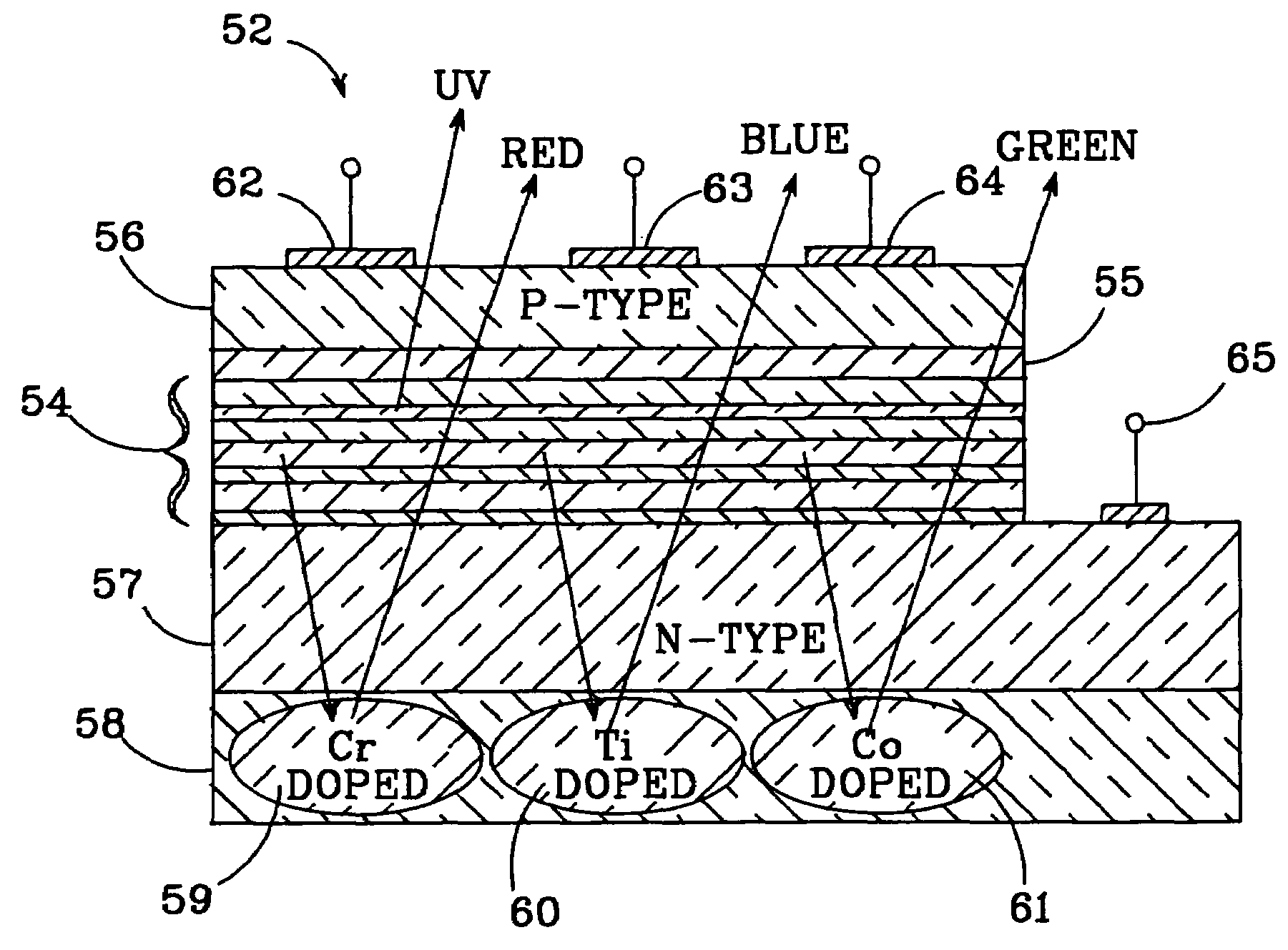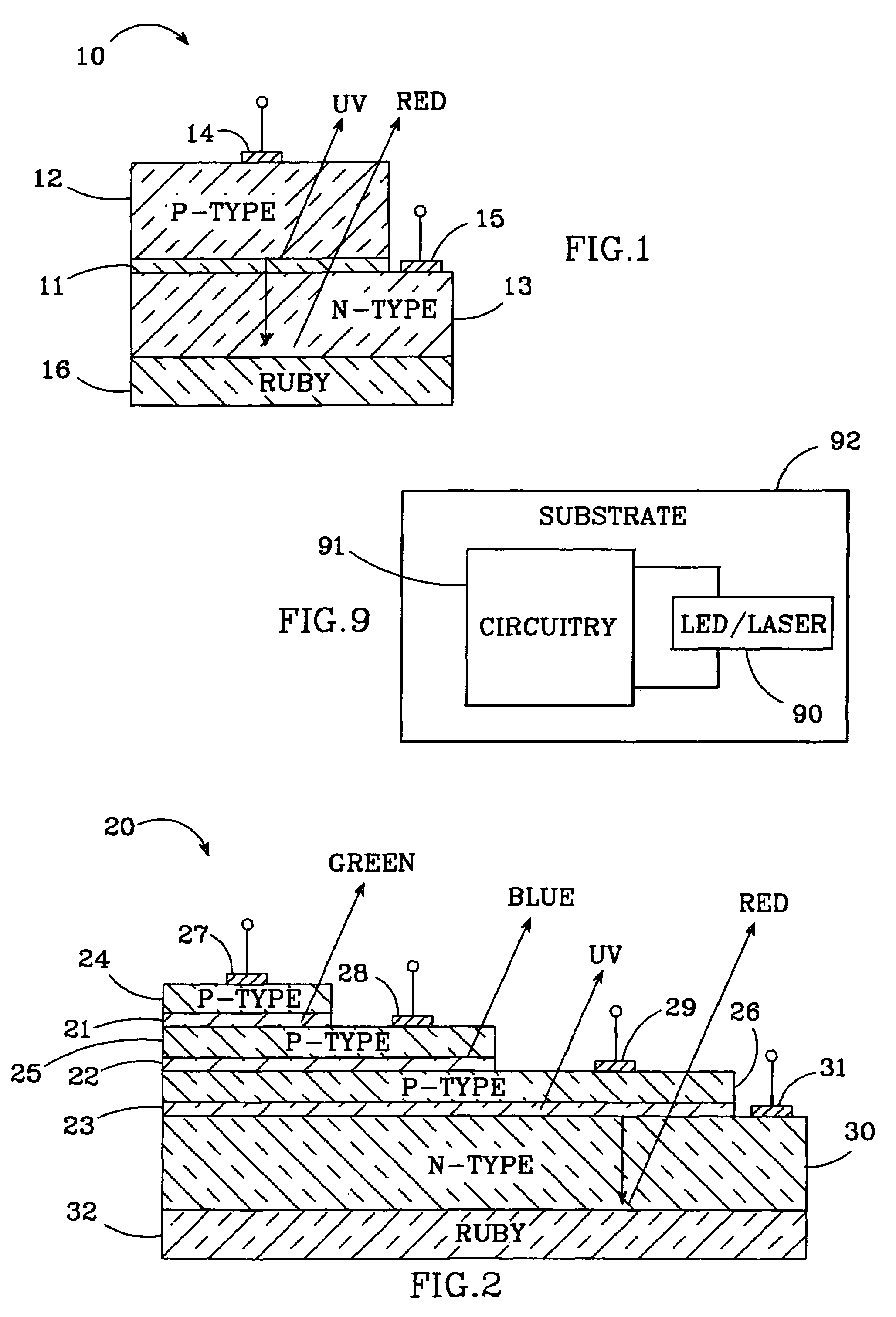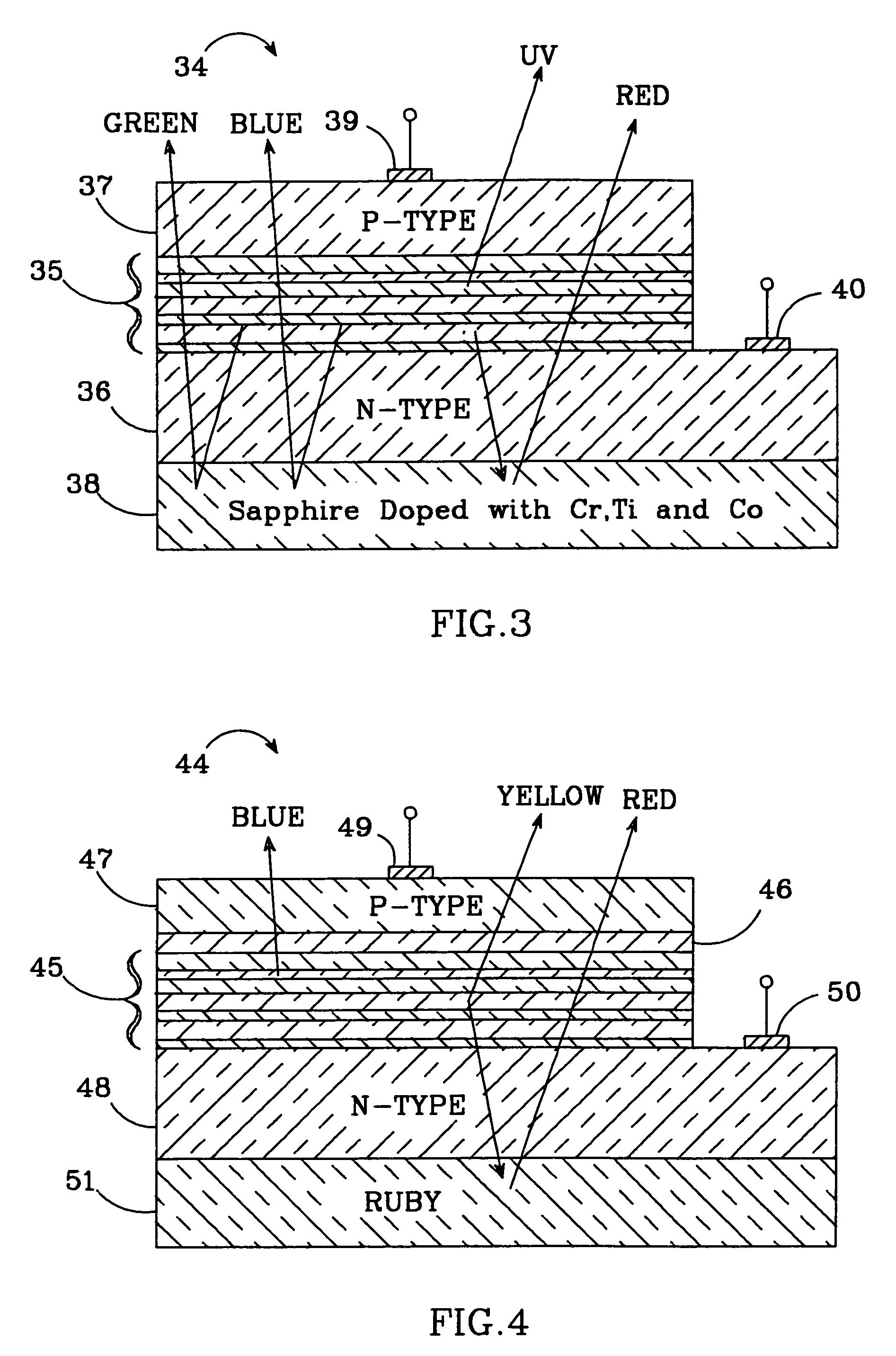Multi element, multi color solid state LED/laser
a solid-state led/laser, multi-element technology, applied in the direction of lasers, semiconductor laser arrangements, semiconductor lasers, etc., can solve the problems of increasing costs, unable to generate white light from active layers, and devices that require complicated control electronics, so as to achieve efficient emitted light, efficiently produce blue and green light, and effectively change the color of light emitted from the overall device
- Summary
- Abstract
- Description
- Claims
- Application Information
AI Technical Summary
Benefits of technology
Problems solved by technology
Method used
Image
Examples
Embodiment Construction
[0033]FIG. 1 shows a single active layer nitride based LED 10 constructed in accordance with the invention. It has an InGaN active layer 11 which emits UV light, sandwiched between two oppositely doped GaN layers 12 and 13. The top layer 12 is usually p-type GaN and bottom layer 13 is usually n-type GaN although the new LED would also work if the layers were reversed. The p-type layer and n-type layers have respective contacts 14 and 15, each having a lead to apply a bias across the active layer 11, causing it to emit light omnidirectionally. The entire LED is grown on a sapphire (Al2O3) substrate doped with chromium (Cr), which creates ruby. Ruby is commercially available from companies such as Union Carbide in a form that can be used for substrates on solid state devices. The LED can be grown on the substrate by many known methods with the preferred method being Metal Organic Chemical Vapor Deposition (MOCVD).
[0034]Some of the light emitted from active layer 11 will pass through i...
PUM
 Login to View More
Login to View More Abstract
Description
Claims
Application Information
 Login to View More
Login to View More - R&D
- Intellectual Property
- Life Sciences
- Materials
- Tech Scout
- Unparalleled Data Quality
- Higher Quality Content
- 60% Fewer Hallucinations
Browse by: Latest US Patents, China's latest patents, Technical Efficacy Thesaurus, Application Domain, Technology Topic, Popular Technical Reports.
© 2025 PatSnap. All rights reserved.Legal|Privacy policy|Modern Slavery Act Transparency Statement|Sitemap|About US| Contact US: help@patsnap.com



